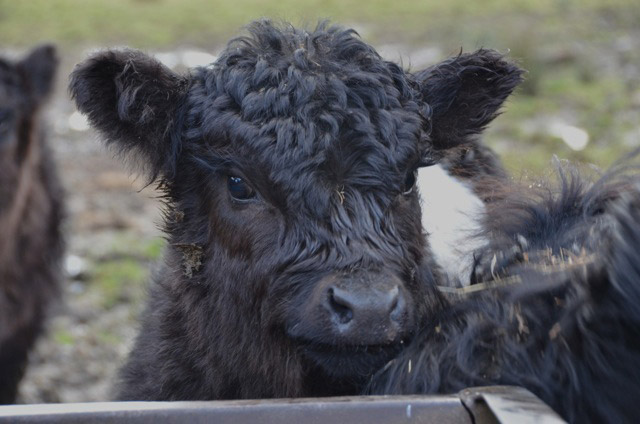Britain still possesses the greatest variety of Native Beef Breeds in the world. This is a wonderful asset. These native breeds have retained their ability to thrive particularly well on grass and preserved grass. Belted and White Galloway Cattle are world famous in this respect. And with the OTM regulation to be withdrawn in the foreseeable future, we will be able to benefit from this again. A lot of scientific research has been carried out during the last decade, on the effect of grass-fed beef on human health.

So what can our grass-fed Belted and White Galloways do for us?
Scientists have discovered that it is not enough to have sufficient amount of unsaturated fatty acids in our food, but that two kinds, Omega-3 and Omega-6, are beneficial to our health, only when they are present in the ratio 1:5 or lower. They are then able to protect us from arteriosclerosis, thrombosis and they may even reduce cholesterol levels. Nowadays, animal products, such as beef, milk, eggs, are mostly produced intensively with grain. But grain, as well as sun flower seeds and many others, contains predominantly Omega-6 fatty acids. At present we find ratios of 1:10 to 1:20 of Omega-3 to Omega-6 fatty acids in human consumption in industialised countries. This indicates an excessive level of Omega-6 acids in our food. In beef from cattle reared intensively in US feed-lots, ratios of 1:14 have been found, arising from the high intake of Omega-6 fatty acids in their cattle feeds.
Grass contains 45% to 50% of Omega-3 fatty acids, the highest amount compared to all other cattle feeds. Scientists were able to prove, that beef from cattle reared on grass contains not only less saturated fatty acids, but also the ratio of the unsaturated Omega-3 to Omega-6 fatty acids is reduced to about 1:3. Therefore grass-fed beef is an obvious choice for a healthy diet, being capable of providing the health benefits mentioned above.

Our grass-fed Belted and White Galloway beef also contains a fatty acid which ruminants, in particular, produce in their complicated digestive system. It is known as ‘Conjugated Linoleic Acid’ or CLA for short. In recent research, this CLA has been discovered to have anti-carcinogenic properties; it can also provide protection from diabetes and arteriosclerosis, help to reduce obesity, and boost the immune system.
But this is not the whole story: grass-fed beef has also been proven to have a more pleasing taste than grain-produced beef. So let us enjoy a meal, which tickles our taste-buds, in the knowledge that it is doing us a lot if good. This must surely be beneficial to our state of wind as well.
And there is yet another point to make for grass-fed Belted and White Galloway Cattle: in grazing the hills without any significant intake of concentrates they not only protect but also enhance the biodiversity of marginal and environmentally sensitive areas. This fact has been proven in scientific research for a variety of habitats all over Europe. These areas are generally classified as ‘poor grazing’ for continental breeds. But Belted and White Galloways are able to produce beef of an outstanding quality in taste and texture from this so-called ‘poor grazing’. Their maintenance costs are considerably lower and at the same time benefits are higher from human health and the environment. These special abilities of Belted and White Galloway Cattle boosted exports before the introduction of the export ban in 1990.
When the going gets tough, the Belties get going!
Belted Galloway Journal 2004 – Written by Ulrike Kaufhold, Dallash Farm, Newton Stewart, Dumfries & Galloway.
References: Publications in “Fleischrinder-Journal” by prof. Dr. K. Enders et.al., Germany, June 2004, and Dr. B. von Fischer, Switzerland, Sept 2001
